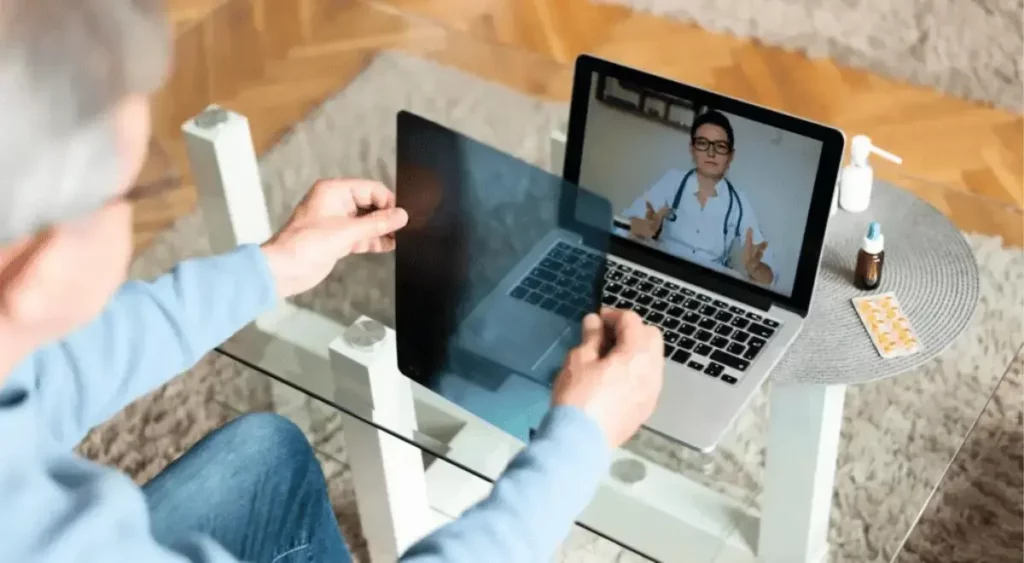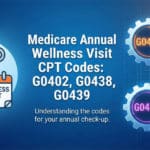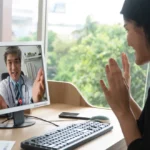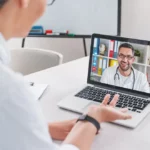Guide to Remote Patient Monitoring Success

Remote Patient Monitoring (RPM) is becoming a game-changer in this ever-evolving world of remote monitoring healthcare, especially for healthcare professionals, clinicians, and physicians who are committed to giving top-notch virtual care to remote patients.
This tech isn’t just transforming how we look after patients; it’s also opening new doors for medical practices to enhance their service efficiency and profitability. In this detailed guide, we’re going to dive deep into the ins and outs of RPM, dishing out some really useful tips for healthcare pros to shine in this area.
Table of Contents
ToggleWhat is Remote Patient Monitoring?
RPM is a technologically advanced approach to patient care, enabling healthcare providers to monitor patients’ health remotely. Using remote patient monitoring devices, such as blood pressure monitors, glucometers, weight scales, pulse oximeters, thermometers, spirometers, continuous glucose monitors, and wearable heart rate trackers, RPM provides real-time health insights.
This technology enables you to proactively manage chronic conditions, diagnose potential health issues early, and optimize your practice’s efficiency. Essentially, RPM extends your care beyond the clinic, enhancing patient outcomes and practice management, along with:
- Enhanced Patient Care: Continuous monitoring leads to early detection of health issues, timely interventions, and personalized care plans.
- Operational Efficiency: RPM reduces the need for in-person visits, optimizing resource allocation and reducing operational costs.
- Patient Empowerment: Patients gain insights into their health, fostering engagement and adherence to treatment plans.
Scope Of Remote Patient Monitoring(RPM)
The RPM market is booming, with projections indicating a compounded annual growth rate (CAGR) of 18.64% by 2030. This wave is driven by rising demand for digital health solutions, technological advancements, and a growing focus on patient-centered care.
The continuous evolution of health tech, including AI and IoT integration in remote monitoring devices, is creating more sophisticated and user-friendly monitoring solutions. These innovations are attracting more patients to RPM and also enhancing the quality of care the healthcare professionals can provide.
Benefits of Remote Patient Monitoring (RPM)
Remote Patient Monitoring (RPM) is transforming healthcare delivery with several key benefits, including the establishment of a comprehensive remote patient monitoring program that enhances patient care.
- Early Detection and Intervention
Real-time data from RPM allows healthcare professionals to quickly identify and address potential health issues.
- Increase in Revenues Through Reimbursements
Federal and private health insurers reimburse RPM services delivered to patients at home via RPM CPT Codes with a potential for earning up to $250 per patient each month.
- Convenience and Accessibility
RPM provides care at home, benefiting those with mobility issues or living in remote areas and enhancing patient satisfaction.
- Reduced Healthcare Costs
RPM decreases the need for in-person visits, reducing healthcare costs and potentially lowering hospital readmission rates.
- Improved Healthcare Efficiency
RPM streamlines patient monitoring, leading to better resource allocation and time management in healthcare practices.
- Better Health Outcomes
Continuous data collection through RPM offers a comprehensive health overview, enabling informed decision-making and improved patient health outcomes.
Cost-Effectiveness and Revenue Generation in RPM
Embracing Remote Patient Monitoring (RPM) presents significant financial advantages for healthcare practices. Here’s how RPM can be both cost-effective and a strong revenue generator:
- Optimized Staff Utilization: RPM allows for more effective use of staff, as they can manage multiple patients remotely, reducing the pressure on in-clinic resources.
- Broadening Service Offerings: Incorporating RPM adds a new dimension for delivering care to a wider range of patients and meeting the demand for quality health care.
- Enhanced Billing Efficiency: It facilitates the introduction of new RPM billing codes, enabling practices to bill for services that were previously non-reimbursable.
- Predictable Revenue Streams: With RPM, practices can establish more predictable and consistent revenue streams, as remote monitoring services often involve regular, ongoing patient engagement.
- Cost-Benefit Analysis: Regularly evaluate the cost-effectiveness of your RPM program, balancing the investment in technology against the returns in terms of patient volume and reimbursement rates.
Implementing RPM to Your Practice: A Step-by-Step Guide
This guide gives a structured approach to help you seamlessly incorporate RPM into your practice, ensuring both your patients and your practice reap the maximum benefits.
Step 1: Assess Practice Needs
Evaluate your patients’ health monitoring needs, focusing on prevalent chronic conditions. Determine how RPM can integrate with your existing Electronic Health Records (EHR) and practice management systems for seamless data flow.
Step 2: Choose the Right Technology Partner
Select RPM technology that is user-friendly for both patients and staff, ensuring easy adoption. Look for reliable data transmission capabilities and consider HealthArc’s care coordination solutions.
Step 3: Educate Patients and Staff
Communicate the benefits of RPM clearly to patients and staff. Conduct training sessions to ensure optimum and effective use of RPM devices.
Step 4: Streamline RPM Processes
Implement systems for automated data collection to reduce manual efforts and errors. Utilize RPM data to prioritize patient care and resource allocation.
Step 5: Monitor and Evaluate
Regularly assess the RPM system’s performance using metrics like patient adherence and data accuracy. Pursue feedback from patients and staff to determine improvement areas and meet practice needs.
RPM Healthcare Billing Codes & Reimbursement
Billing codes, particularly Current Procedural Terminology (CPT) codes, are vital in the healthcare industry as they standardize medical services for billing and reimbursement purposes.
In Remote Patient Monitoring (RPM), specific CPT codes are used for billing for various services, such as the initial setup and patient education on RPM equipment, the supply of devices, and the collection and interpretation of health data.
How Reimbursement Works in RPM?
Reimbursement in RPM involves healthcare providers receiving payment from insurance companies or Medicare for services rendered using cellular technology.
After providing RPM services, healthcare providers submit claims to payers with the appropriate CPT codes. These claims are then evaluated, and if approved, the provider receives reimbursement based on the predetermined rates for those services.
Common RPM-Related CPT Codes
CPT 99453: For initial setup and patient education on RPM equipment.
CPT 99454: For the supply of RPM devices and 16 unique readings for every 30 days.
CPT 99457: For the first 20 minutes of a physician, qualified health care practitioner, nurse practitioner and other clinical staff in a calendar month demanding interactive communication with the patient or caregiver.
CPT 99458: For each additional 20 minutes of required interactive communication.
HealthArc’s Role in Advancing RPM Technologies
HealthArc is making significant strides in advancing Remote Patient Monitoring (RPM) technologies and trends. Here’s how:
- Diverse Medical Devices Integration
HealthArc’s platform unifies data from 40 medical devices, including cellular, Bluetooth, and wearable technologies, facilitating comprehensive patient monitoring.
- AI-Powered Clinical Pathways
Utilizing AI, HealthArc tailors clinical pathways for various diseases, improving efficiency in monitoring and focusing on patients needing immediate care.
- Robust Data Security
With a dedicated Security & Compliance team, HealthArc ensures high data protection standards and HIPAA compliance, securing patient information.
- Customizable Clinical Software
The platform features adaptable clinical software, allowing healthcare providers to tailor monitoring and care strategies to meet diverse patient needs.
Ready to Maximize Your RPM Reimbursements?
Embrace the future of healthcare with HealthArc’s advanced RPM solutions. Tailored to enhance patient care and boost your practice’s efficiency, we offer the latest technology and support you need to succeed.
Take action towards transforming your healthcare delivery. Connect with HealthArc today and unlock the full potential of RPM in your practice. Request a free demo today.
Most Recent Blogs
Categories
Related Blog
- November 26, 2025 | Read Time: 14 mins
Return on Investment (ROI) of Remote Patient Monitoring (RPM): A Complete Guide for ACOs and Healthcare Organizations
The U.S. healthcare system continues its transition from fee-for-service models to value-based...
Learn More- November 24, 2025 | Read Time: 15 mins
Common RPM Pricing Models for Providers: A Profitability-Focused Guide
Remote Patient Monitoring (RPM) has rapidly emerged as one of the leading...
Learn More- October 23, 2025 | Read Time: 12 mins
How RPM Devices Improve Hypertension and Diabetes Outcomes in Medicare Populations
Remote patient monitoring (RPM) is transforming chronic care for Medicare beneficiaries. CMS...
Learn More


